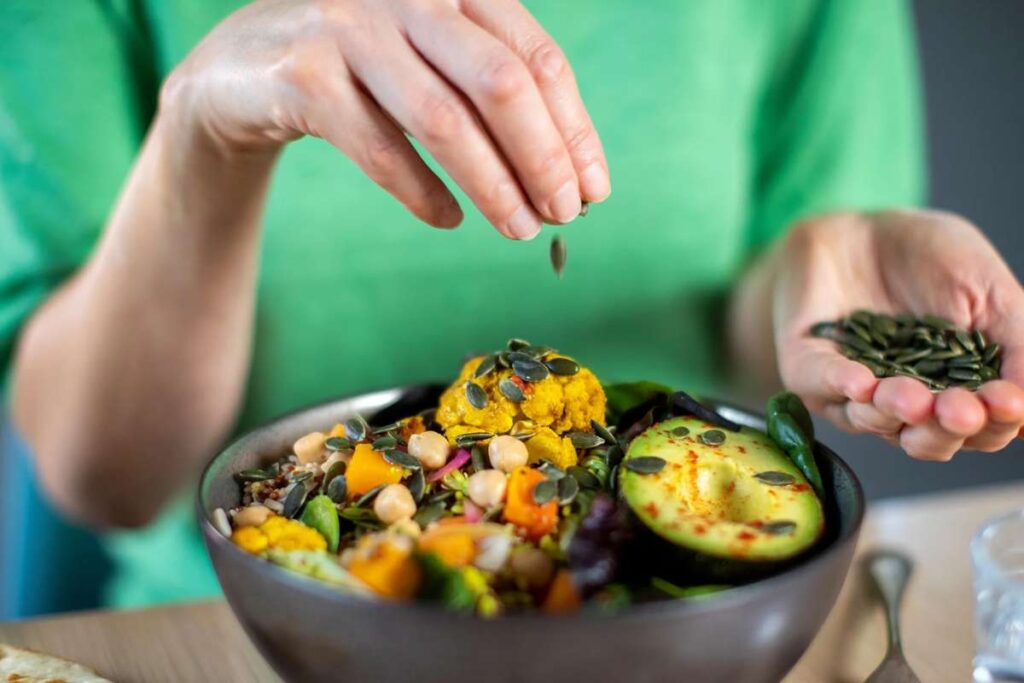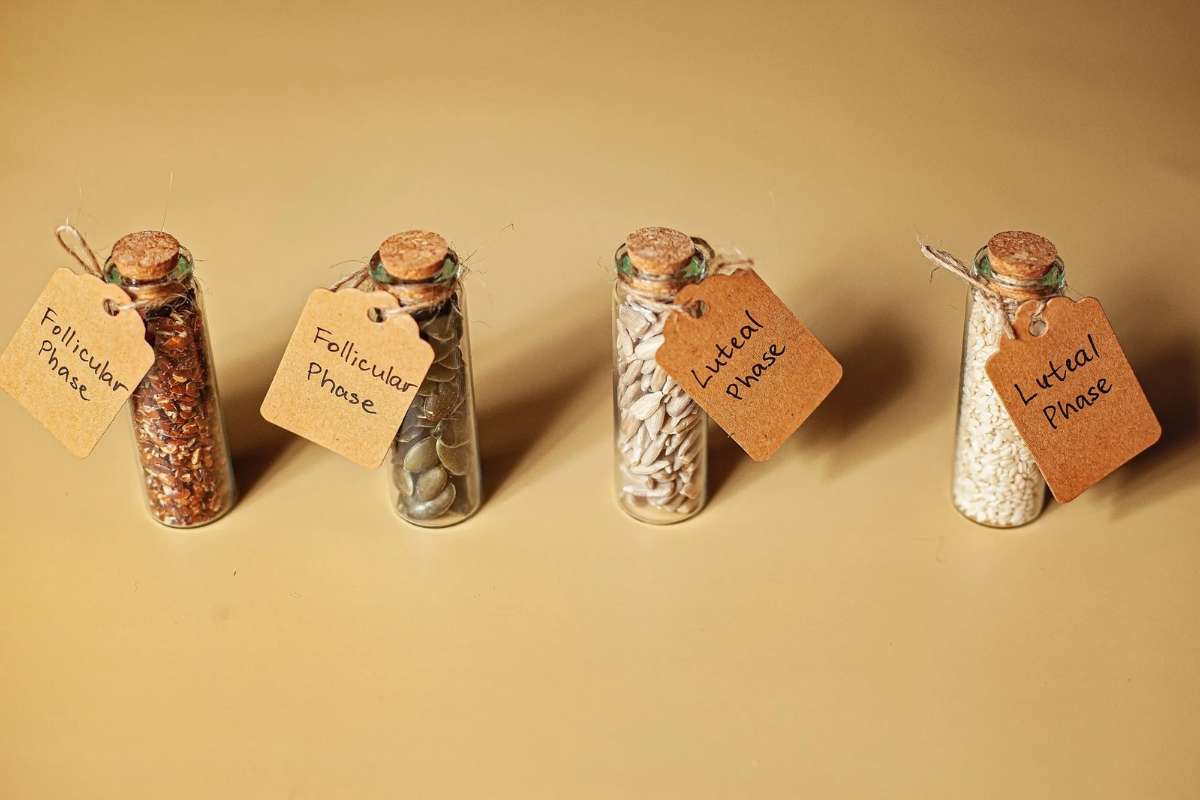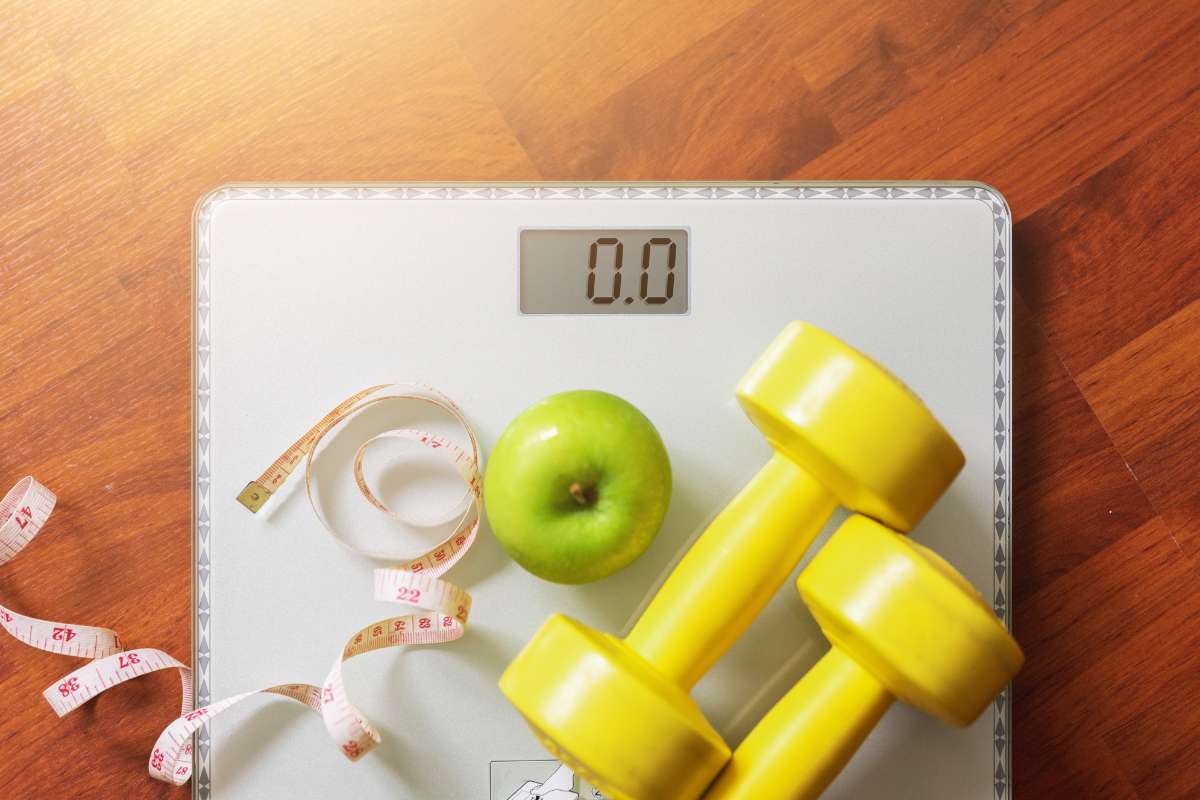Women are increasingly seeking natural ways to support their hormonal health. One practice gaining significant attention is seed cycling for women, a gentle yet effective approach that has captured the hearts of health enthusiasts worldwide. This ancient naturopathic method involves consuming specific seeds during different menstrual cycle phases to promote hormonal balance. While the concept might sound simple, the science behind it reveals a complex interplay between nutrition and reproductive health. As more women struggle with hormonal imbalances affecting everything from menstrual regularity to fertility, seed cycling offers a food-based solution that works harmoniously with your body’s natural rhythms.
In this article, we’ll understand the practice of seed cycling for women, walking you through the science, benefits, and a simple guide to getting started.
What is Seed Cycling?
Seed cycling represents a holistic nutritional approach rooted in naturopathic medicine. This practice involves consuming four specific seeds, flax, pumpkin, sunflower, and sesame, in a carefully structured rotation that aligns with the two main phases of your menstrual cycle.
The fundamental principle behind seed cycling lies in utilizing the unique nutritional profiles of these seeds to support your body’s natural hormone production. Each seed contains specific compounds, vitamins, and minerals that may influence estrogen and progesterone levels during different times of your monthly cycle.
This approach differs from synthetic hormone interventions because it works with your body’s existing systems rather than overriding them. Seed cycling provides targeted nutrition at precisely the moments when your body needs specific support for optimal hormonal function.
The beauty of this practice lies in its simplicity and accessibility. Unlike complex supplement regimens or medical interventions, seed cycling for women requires only four common seeds and the commitment to maintain consistent daily consumption. This makes it an appealing option for women seeking natural ways to support their reproductive health without complicated protocols.
Understanding Your Cycle Phases
To effectively implement seed cycling for women, you must first understand the intricate dance of your menstrual cycle. Your monthly cycle consists of two primary phases, each characterized by distinct hormonal patterns that seed cycling aims to support.
The follicular phase represents the first half of your cycle, typically spanning days 1-14. This phase begins with the onset of menstruation and continues until ovulation occurs. During this time, your body prepares for potential conception by developing egg follicles within your ovaries. Follicle-stimulating hormone (FSH) initiates this process, leading to a gradual rise in estrogen levels as the dominant follicle matures.
Throughout the follicular phase, estrogen is crucial in rebuilding the uterine lining shed during menstruation. This hormone also influences your well-being, including energy levels, mood, and cognitive function. For seed cycling to be practical during this phase, the selected seeds must support healthy estrogen production while preventing excess accumulation.
The luteal phase encompasses the second half of your cycle, from ovulation through the start of your next period. After the egg is released, the empty follicle transforms into the corpus luteum, producing progesterone. This hormone is essential for maintaining the thickened uterine lining and supporting early pregnancy if fertilization occurs.
During the luteal phase, progesterone levels should ideally rise significantly while estrogen levels moderate. This delicate balance affects numerous bodily functions, including sleep patterns, mood stability, and metabolic processes. Seed cycling for women during this phase focuses on supporting robust progesterone production while helping the body metabolize excess estrogen.
How Seed Cycling Works?

Seed cycling involves strategically using nutrients found in four carefully chosen seeds. Each seed provides unique compounds that may influence hormonal pathways during particular phases of your menstrual cycle.
During the follicular phase, seed cycling for women employs flax and pumpkin seeds to support this critical time. Flax seeds contain high concentrations of lignans, phytoestrogens that can have estrogen-like or anti-estrogenic effects depending on your body’s needs. These compounds help modulate estrogen levels, supporting healthy production while preventing excessive accumulation.
Research has shown that flaxseed consumption may lead to improved cycle regularity, lengthened luteal phases, and reduced cyclical breast pain. In one significant study involving normally cycling women, flaxseed supplementation was associated with longer luteal phases and improved progesterone-to-estradiol ratios. Seed cycling for women using flax seeds may help optimize the delicate hormonal balance required for healthy reproductive function.
Pumpkin seeds contribute essential zinc to the follicular phase protocol. This mineral plays a crucial role in progesterone synthesis and helps prepare your body for the hormonal shift after ovulation. Zinc also supports immune function and wound healing, particularly during menstruation.
The luteal phase incorporates sesame and sunflower seeds to support progesterone production and estrogen metabolism. Sesame seeds contain lignans similar to those found in flax seeds. Still, they appear to be particularly effective at helping your body process and eliminate excess estrogen during the luteal phase, when progesterone should predominate.
Sunflower seeds provide vitamin E and selenium, which support progesterone production and assist your liver in processing hormones. Research indicates that vitamin E may help reduce PMS symptoms, while selenium supports healthy liver detoxification processes essential for hormonal balance.
Here are Top 5 Health Benefits of Seed cycling for women:
1. Menstrual Cycle Regulation
Seed cycling can help establish consistent menstrual patterns by providing targeted nutrients during each cycle phase. Flax seeds’ lignans support healthy estrogen metabolism during the follicular phase, while pumpkin seeds’ zinc aids in progesterone synthesis for the luteal phase. Women consuming flax seeds have experienced longer luteal phases and improved progesterone-to-estradiol ratios, indicating more regular cycles and better reproductive health.
2. PMS Symptom Relief
The anti-inflammatory properties of omega-3 fatty acids in flax and pumpkin seeds may reduce common premenstrual discomforts such as breast tenderness, cramps, and mood swings. Additionally, sunflower seeds’ vitamin E helps stabilize mood and alleviate bloating, making seed cycling a natural way to ease PMS symptoms without pharmaceutical intervention.
3. PCOS Management

For women with polycystic ovary syndrome, seed cycling offers hormonal and metabolic support. A controlled study showed that combining seed cycling with dietary changes led to significant reductions in luteinizing hormone (LH) levels and improvements in insulin sensitivity. The zinc in pumpkin and sesame seeds further supports androgen balance, addressing key hormonal imbalances in PCOS.
4. Fertility Support
By promoting a balanced estrogen-to-progesterone ratio and improving luteal phase length, seed cycling can create a more favorable environment for conception. Sunflower seeds’ vitamin E has been linked to enhanced egg quality, while the combined nutritional support from all four seeds may boost ovulatory function and overall reproductive health.
5. Menopausal Symptom Management
During the transition to menopause, phytoestrogens in flax seeds can provide gentle estrogenic support, helping to reduce the frequency and severity of hot flashes. Clinical research has shown that flaxseed supplementation significantly reduces menopausal symptoms, offering a food-based approach to easing this life stage.
Incorporating Seed Cycling into Daily Life
Successful seed cycling hinges on consistency and simplicity. Follow these steps to weave seed cycling for women into your routine:
Follicular Phase (Days 1–14):
- Daily Blend: 1–2 tablespoons of equal parts ground flax and pumpkin seeds.
- Preparation: Grind fresh, organic seeds in weekly batches; store in an airtight container in the fridge.
- Ways to Enjoy: Stir into morning smoothies, sprinkle over oatmeal or yogurt, blend into granola bars, or mix into salad dressings.
Luteal Phase (Days 15–28):
- Daily Blend: 1–2 tablespoons of equal parts ground sunflower and sesame seeds.
- Meal Ideas: Add to soups, stews, or baked goods; fold into dips or energy bites.
- Tracking: Note phase transitions on a calendar or use a cycle-tracking app. For irregular cycles, align the seed swap with new and full moons.
By making minor adjustments, pre-portioning seeds, experimenting with recipes, and setting reminders, you’ll continuously maintain the seed cycling for women practice.
Scientific Evidence and Research
Although studies on the full seed cycling protocol remain limited, research on individual seeds underpins this approach:
Flax Seeds:
- Longer luteal phases and improved progesterone-to-estrogen ratios were observed in healthy women consuming ground flax.
- Enhanced estrogen metabolism in postmenopausal women increases beneficial estrogen metabolites.

Pumpkin Seeds:
- Zinc content supports progesterone synthesis and corpus luteum formation, addressing cycle irregularities linked to zinc deficiency.
Sunflower Seeds:
- Vitamin E reduces PMS symptoms and supports progesterone production.
- Selenium aids liver detoxification of excess hormones, promoting balance.
Sesame Seeds:
- Lignans modulate estrogen activity, helping eliminate surplus estrogen during the luteal phase.
PCOS Applications:
- A 2023 trial combining seed cycling for women with diet showed significant reductions in LH levels and improved insulin sensitivity among women with PCOS.
Limitations: Most trials focus on single seeds or specific populations. More comprehensive studies are needed to confirm seed cycling’s efficacy across diverse groups.
Also Read: High-Protein Vegetables and Fruits: Nutrient-Packed Recipes to Boost Your Diet
Conclusion
Seed cycling for women offers a natural, food-based method to support hormonal health throughout the menstrual cycle. By consuming specific seed blends in each phase, you tap into the estrogen-modulating lignans of flax and sesame, the zinc of pumpkin, and the vitamin E and selenium of sunflower seeds. Early studies and clinical observations point to benefits for cycle regularity, PMS relief, PCOS management, and menopausal comfort. While more holistic research is forthcoming, integrating seed cycling into daily life remains an accessible strategy for women seeking gentle hormone support. Embrace this simple rotation of seeds as part of your wellness toolkit and listen to your body’s response over time.


















